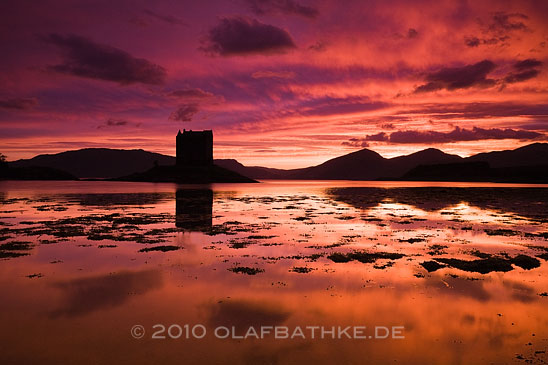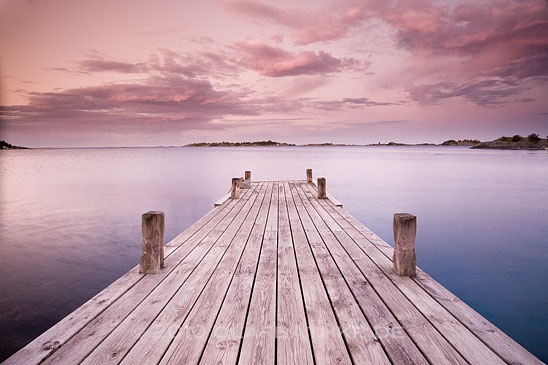Gold-N-Blue Polarizer: Rules for the serious landscape photographer

Optimal equipment is the basis for perfect photos. Equipment reliability and perfection is just as important as the knowledge about the possibilities of any gadget. As a believer of the principle „less is more“ I limited myself to only the equipment that is necessary for the development of my photographic vision.
Before a photo tour I always consider carefully exactly what must actually go into the backpack. Filters are the icing on the cake for a landscape photographer. My filter backpack is therefore always well filled.
Technical facilities cannot be replaced by the digital retouching of photos. Lightroom & CO cannot:
• organize light permeability,
• control the shutter speed,
• filter the reflection of light,
• produce special colored effects.
 One of my favorite filter effect: Gold-N-Blue
One of my favorite filter effect: Gold-N-Blue
One of my favorite filter is the Gold-N-Blue Polarizer from Singh Ray.
There are simliar filter from Cokin and Lee for smaler budget. They do a similiar job.
In certain light situations the Gold-N-Blue Polarizer creates a unique effect, without which I would not like to photograph any longer. Because of the strong effect its use must be well considered. Without paying attention, the color effect of it seemed tawdry.
Over the years I develop some rules, according how to use the Gold-N-Blue Polarizer:
 Rule one: Let only one color dominate
Rule one: Let only one color dominate
One characteristic of the Gold-N-Blue Polarizer is that it pronounces the yellow/red and blue tones strongly. I prefer to use the filter if I can let one color dominate. Here you can see a marvelous golden effect in the evening light. The blue tones work only discreetly in the sky.
 Rule two: Sometimes desaturation is the key
Rule two: Sometimes desaturation is the key
Most landscape photographers saturate the colors in post production. The straight Gold-N-Blue Polarizer demands sometimes the opposite. Here you can see a desaturated photo from Sweden, which expresses the Nordic coolness.
 Rule three: Gain nearly one stop and start earlier with long exposures
Rule three: Gain nearly one stop and start earlier with long exposures
The Gold-N-Blue Polarizer also has the effect that it lets less light into the camera. As a fan of time exposures, I appreciate this effect. It gives me nearly one stop of exposure extra. In the evening hours I usually can make the desired long exposure 30 minutes earlier.
The Gold-N-Blue Polarizer is a great companion on all my photo tours. Do you use this kind of filter?

July 11, 2012 at 18:58
Maciej
Olaf great to see someone on this side of Atlantic to use it…. By the way are you going to Photokina in Koln this September ? I will be there
July 11, 2012 at 19:20
Olaf Bathke
Maciej: I will go there but I don’t know if any big jobs a demanding my help during photokina. So pressing thumbs. If I will go I invite you to a wine i my VAN 🙂
April 8, 2011 at 18:20
kim
I regret to learn the max filter size is 77mm, I am in the need for 82mm for my EF 16-35mm 2.8L II.
Any suggestions or thoughts, what I should do instead?
Cheers
Kim
April 8, 2011 at 19:17
olaf
Hi Kim: I guess till now, that there is a 82mm. So you have to work with different lenses. 🙁 The 17-40 is a great lens… similiar the 16-35 but only on a non crop cam…
February 14, 2014 at 17:43
Prashant
I know this comes kinds 3 years later and still there is not option for a 82m filter. I was in the same boat. I have a 24-70 EF L II with a 82 mm thread. I purchased the 77mm filter thread and use it with a step down converter ring from Goja which you get from Amazon for $4.50.
September 18, 2014 at 10:24
Serena
Hi Prashant – by using the 77mm filter thread with a step down converter ring, have you experienced any vignetting? For the price of the Gold-N-Blue filter, I’m not really sure I want to spent that much on a size that doesn’t match what I really want! I’m holding out for the 82mm but it looks like it’s been unavailable for years.
September 18, 2014 at 16:36
Olaf Bathke
Serena, it depends on your lens. I guess there is not a big chance for vignetting on standard lenses. You can find some information on vignetting on the Singh Ray Blog..
March 31, 2011 at 00:47
Brian Powell
Great photos 🙂 I like your blog and style…
Just heard from Singh-Ray that the GoldNBlue is back, so considering an order. FYI to all, it should appear back on their website soon!
March 31, 2011 at 10:07
olaf
@brian thx for sharing. so i had to order my 84mm g&b
Pingback: Vendo Singh Ray Gold-n-Blue Polarizador 77mm - Canonistas.com
March 1, 2011 at 19:43
olaf
Normally you can purchase the G&B only here: http://www.singh-ray.com/goldnblue.html
But it is temporarely unavailable. Write SR an email and ask when it wil be available.
I would not recommend the similiar Filter from Cokin. It is not the same from the colors and a bit harsh…
February 2, 2012 at 14:35
Viki Reed
At the Singh-ray page you shared a link to; they have a lot of options on the crazy great filter you praised.
I’m a novice and junkie for things like this but I’m far from cash flowing at the moment so my question is, which version of that filter would you recommend? Soft or hard graduation, what thickness? The filters start at $99 and double that.
Also, being a novice with a nice new prime wide angle that I’d love to try out on more landscapes; can you write a blog piece about the ideal starting filter kit?
February 2, 2012 at 14:36
Viki Reed
I meant to check the notify me box, too! I don’t want to miss your answer if you have time to get to me.
February 2, 2012 at 17:53
olaf
Viki: Ask the support from SR. They answer you every question.
March 1, 2011 at 19:37
Kathy
It looks very nice!
Can you tell me where to get it?
Thanks!!
January 21, 2011 at 15:52
Marcos Jennins
Hello, this is really a really fascinating web weblog and ive loved reading many in the posts and posts contained upon the web site, maintain the excellent do the job and hope to study a whole lot a lot more thrilling content articles in the time to arrive.
January 21, 2011 at 15:57
olaf
@Marcos: Thanks for the reply. The English Blog is my new main portal. So lot’s of great articles will follow. I am blogging for years in German language, getting tierd about the small German audience. PLZ help me making this blog more popular. Thank you…
November 21, 2010 at 19:26
Marcos
No. The reason: I cannot find it to buy anywhere!! Which similar filter have Lee and Cokin?
November 21, 2010 at 19:38
olaf
Cokin: Varicolor Blue/Yellow: http://www.cokin.fr/filtres3.html (scroll down)
I was sure Lee sells such filter but I couldn’t find it yet. You can write them an email and ask: http://www.leefilters.com/
November 22, 2010 at 02:11
Marcos
Thanks a lot! I just got one blue/yellow from Cokin. I hope it works.
Pingback: OlafBathke
Pingback: Olaf Bathke
Pingback: OlafBathke
October 29, 2010 at 15:52
Bernd Limbach
Nope, still struggling with everything else… and at the moment a bit limited in moving around, unfortunately…